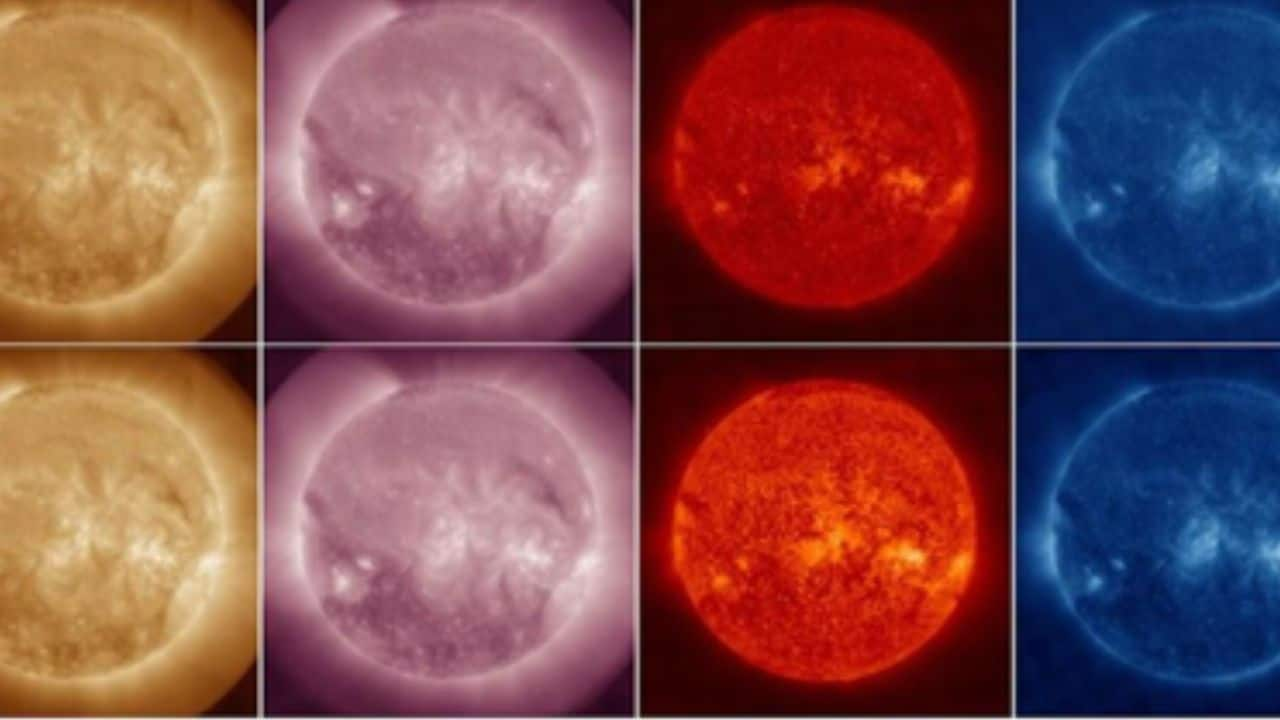Science
NASA and IBM Launch AI Model ‘Surya’ to Predict Solar Storms

NASA, in collaboration with IBM and various academic institutions, has launched the Surya Heliophysics Foundational Model, an advanced artificial intelligence system designed to predict solar storms and flares. This initiative comes at a time when increasing solar activity poses risks to technologies that are integral to modern society, such as GPS and satellite communication.
The Surya model is built on nine years of data from NASA’s Solar Dynamics Observatory, which has consistently monitored solar activity since 2010. By utilizing raw images and vast datasets, Surya can analyze solar phenomena with remarkable speed and accuracy. Early tests indicate that it can forecast solar flares up to two hours in advance, a significant improvement over previous prediction models, which were less reliable.
Enhancing Predictions for Earth’s Safety
Solar storms can have severe implications for Earth, disrupting aviation, damaging power grids, and exposing astronauts to harmful radiation. As noted by Joseph Westlake, director of NASA’s Heliophysics Division, “Our society is built on technologies highly susceptible to space weather.” With solar activity projected to increase, the need for reliable prediction tools has never been more pressing. Surya aims to provide critical early warnings for satellite operators and power companies, potentially mitigating the impacts of solar events.
Surya’s ability to predict solar winds and analyze active regions of the Sun will also help scientists understand how ultraviolet radiation affects the Earth’s upper atmosphere. This knowledge is crucial for maintaining communication systems that may be vulnerable during solar events.
Open Access and Collaborative Development
The Surya model and its associated training datasets are publicly accessible through platforms like HuggingFace and GitHub. This open-access approach allows researchers, students, and developers around the world to leverage the findings and adapt the model for various applications. According to Kevin Murphy, NASA’s chief science data officer, “We are making it easier to analyze the Sun’s complexities with unprecedented speed and precision.”
The development of Surya is part of a broader initiative known as the National Artificial Intelligence Research Resource Pilot, which is supported by the National Science Foundation and industry partners, including NVIDIA. The collaborative effort involved contributions from NASA’s Marshall Space Flight Center, IBM, and several universities, including Princeton, Colorado, and Georgia State. Additionally, the SETI Institute and the Southwest Research Institute provided essential expertise during the model’s creation.
Although initially designed for heliophysics, the framework of Surya is adaptable for various scientific fields, including Earth observation and planetary research. Officials believe that this project marks a significant advancement in AI-powered science, enhancing both space exploration and technology applications on Earth.
-

 World5 months ago
World5 months agoSBI Announces QIP Floor Price at ₹811.05 Per Share
-

 Lifestyle5 months ago
Lifestyle5 months agoCept Unveils ₹3.1 Crore Urban Mobility Plan for Sustainable Growth
-

 Science4 months ago
Science4 months agoNew Blood Group Discovered in South Indian Woman at Rotary Centre
-

 World5 months ago
World5 months agoTorrential Rains Cause Flash Flooding in New York and New Jersey
-

 Top Stories5 months ago
Top Stories5 months agoKonkani Cultural Organisation to Host Pearl Jubilee in Abu Dhabi
-

 Sports4 months ago
Sports4 months agoBroad Advocates for Bowling Change Ahead of Final Test Against India
-

 Science5 months ago
Science5 months agoNothing Headphone 1 Review: A Bold Contender in Audio Design
-

 Top Stories5 months ago
Top Stories5 months agoAir India Crash Investigation Highlights Boeing Fuel Switch Concerns
-

 Business5 months ago
Business5 months agoIndian Stock Market Rebounds: Sensex and Nifty Rise After Four-Day Decline
-

 Sports4 months ago
Sports4 months agoCristian Totti Retires at 19: Pressure of Fame Takes Toll
-

 Politics5 months ago
Politics5 months agoAbandoned Doberman Finds New Home After Journey to Prague
-

 Top Stories5 months ago
Top Stories5 months agoPatna Bank Manager Abhishek Varun Found Dead in Well









